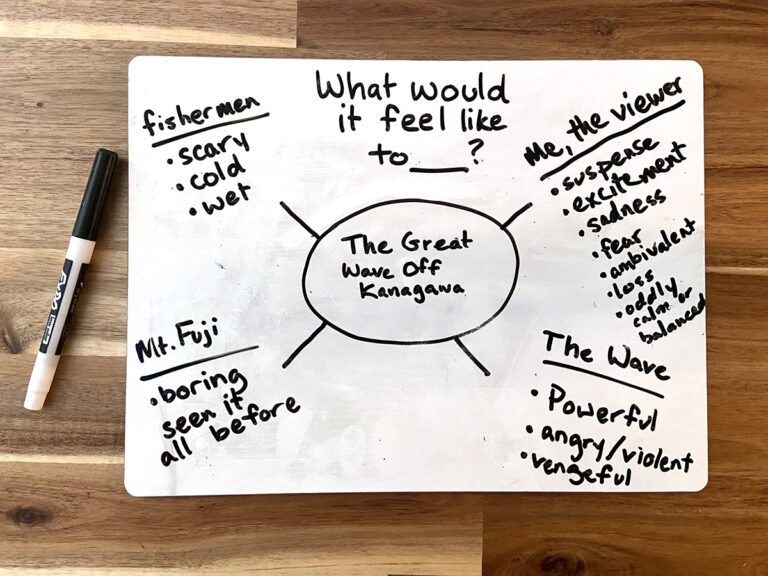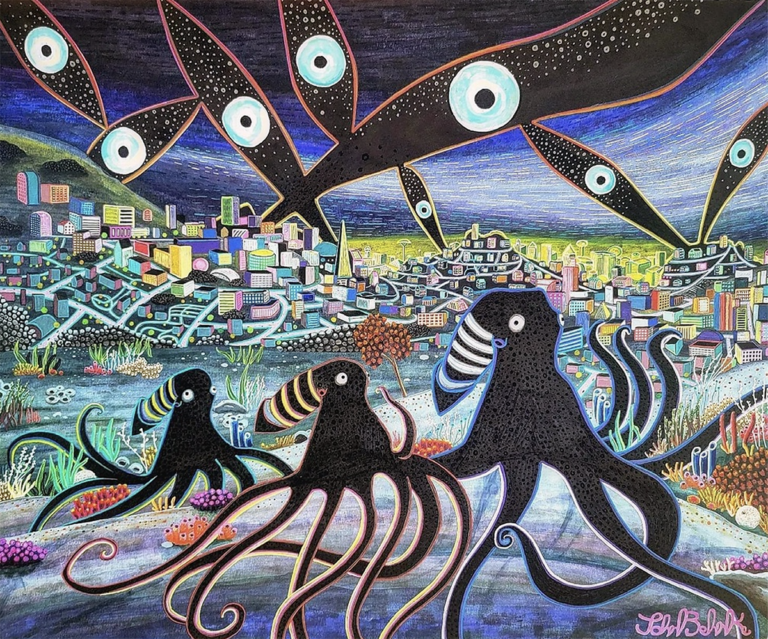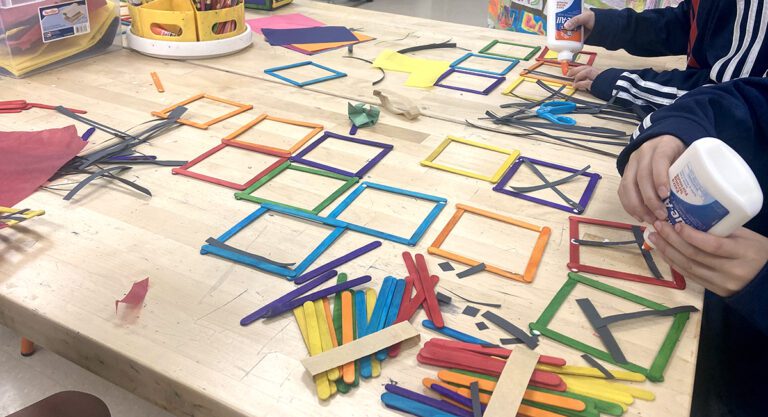As art teachers, many of us appreciate the classical artworks created over the centuries of art history. We often share our passion for these traditional works with our students. However, high school students don’t always share our enthusiasm. Their curiosity is often peaked by the work of contemporary artists though. So, why not introduce students to the classics while simultaneously engaging them with the contemporary?
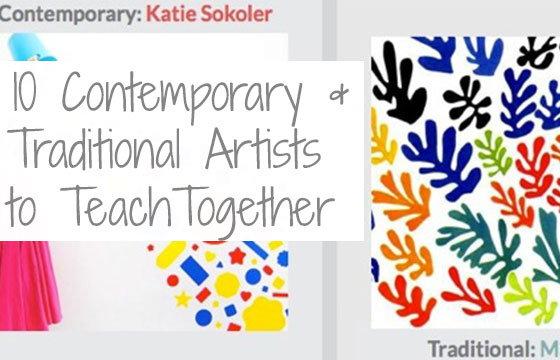
Today I’m sharing my top ten contemporary artists to teach alongside some of the classics.
(Listed Chronologically)
10. David Zinn alongside Lascaux Cave Art
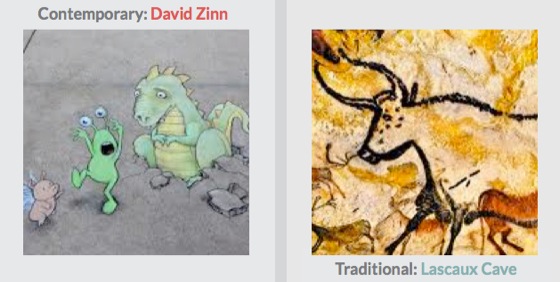
Both involve drawing on the walls. Well, Zinn usually draws on the ground, but still. Keith Haring would make a good choice as well since he created drawings in the subway, which is about as close to drawing in a cave as you can get (though having been in a few subways, I image it smells better in a cave).
9. Noma Bar alongside Greek Vases
With red or black figure Greek vases, it’s all about positive and negative space. Noma Bar creates some incredible artwork utilizing positive and negative space as well.
8. Joshua Allen Harris alongside Roman Art, the She Wolf
There is just something about the black plastic garbage bags rising to life on the streets of New York that reminds me of the She Wolf.
7. Christian Faur alongside Byzantine Mosaics
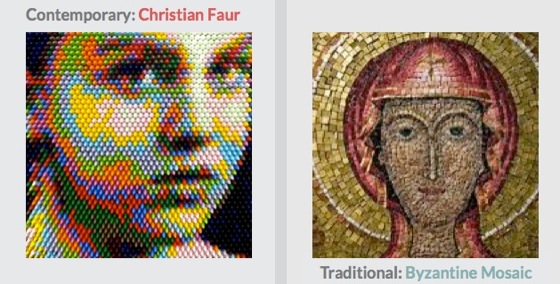
The Byzantine period is well know for mosaics. Today, whether they are created with post-it notes, jelly beans, or balloons, I’m a big fan of contemporary mosaics. Christian Faur’s crayon mosaics are outstanding.
6. Axel Peemoeller alongside Brunelleschi OR Felice Varini alongside Masaccio
In either case, the connection is perspective. Peemoeller and Varini use localized perspective in their works, while Brunelleschi is given credit for inventing linear perspective and Masaccio is given credit for creating the first artwork to incorporate it, The Holy Trinity.
5. Theo Jansen alongside Michelangelo
This might be a stretch, so work with me here. Michelangelo’s sculptures are incredibly life like. Consider the Pieta. Theo Jansen actually brings sculptures to life. His kinetic sculptures walk on the beach using the power of the wind. (Ok, I told you it was a stretch).
4. Patricia Piccinini alongside Romanticism
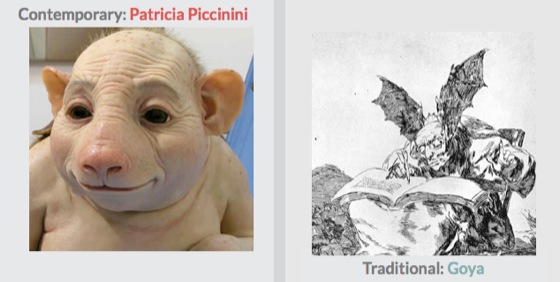
Here I’m looking at Romanticism paintings that lean more toward Goya than Delacroix. There is something about Piccinini’s creatures that just say modern Romanticism to me.
3. Ennio Marchetto alongside Degas
They are both about music, dance, dramatic lighting and the stage.
2. Katie Sokoler alongside Matisse

Not since Matisse has any artist been so creative with cut paper.
1. __________ alongside __________
I left this one blank for you to fill in. Let’s see how many more matches we can come up with together!
By teaching contemporary artists alongside traditional artists, your students will be inspired by new and exciting work, while gaining an appreciation for the classics.
So tell us, what contemporary artists do you teach in your own curriculum?
Could any of them be taught alongside classical art? Share your ideas below!
Magazine articles and podcasts are opinions of professional education contributors and do not necessarily represent the position of the Art of Education University (AOEU) or its academic offerings. Contributors use terms in the way they are most often talked about in the scope of their educational experiences.

